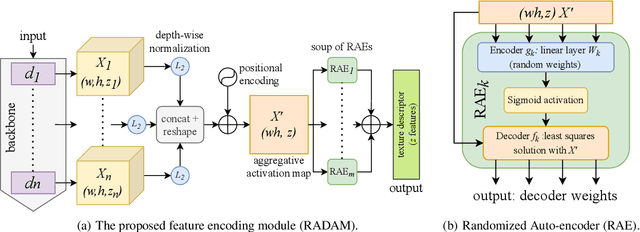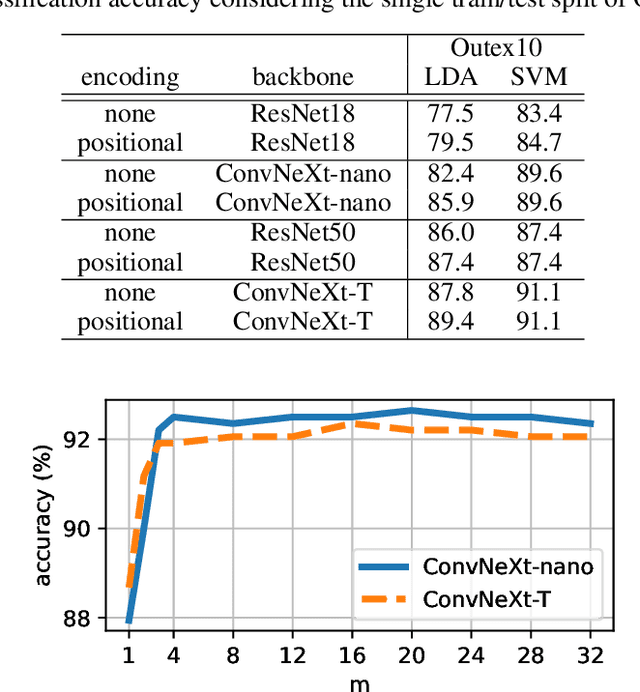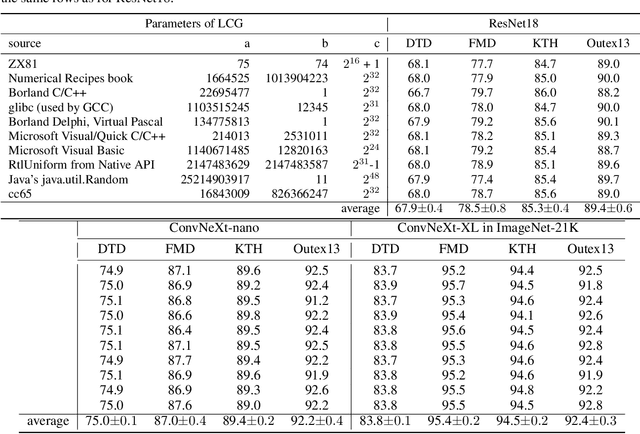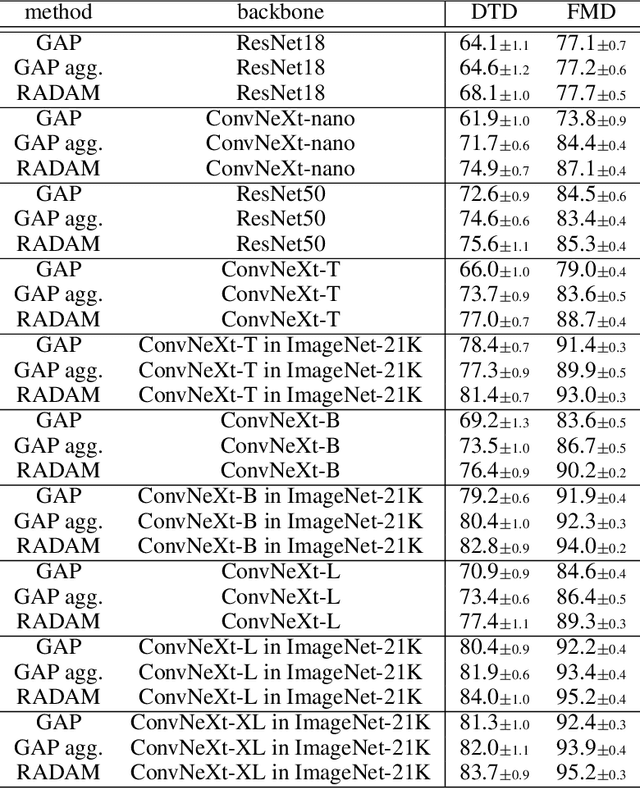Wesley N. Gonçalves
RADAM: Texture Recognition through Randomized Aggregated Encoding of Deep Activation Maps
Mar 08, 2023



Abstract:Texture analysis is a classical yet challenging task in computer vision for which deep neural networks are actively being applied. Most approaches are based on building feature aggregation modules around a pre-trained backbone and then fine-tuning the new architecture on specific texture recognition tasks. Here we propose a new method named \textbf{R}andom encoding of \textbf{A}ggregated \textbf{D}eep \textbf{A}ctivation \textbf{M}aps (RADAM) which extracts rich texture representations without ever changing the backbone. The technique consists of encoding the output at different depths of a pre-trained deep convolutional network using a Randomized Autoencoder (RAE). The RAE is trained locally to each image using a closed-form solution, and its decoder weights are used to compose a 1-dimensional texture representation that is fed into a linear SVM. This means that no fine-tuning or backpropagation is needed. We explore RADAM on several texture benchmarks and achieve state-of-the-art results with different computational budgets. Our results suggest that pre-trained backbones may not require additional fine-tuning for texture recognition if their learned representations are better encoded.
Multi-q Analysis of Image Patterns
Dec 29, 2011



Abstract:This paper studies the use of the Tsallis Entropy versus the classic Boltzmann-Gibbs-Shannon entropy for classifying image patterns. Given a database of 40 pattern classes, the goal is to determine the class of a given image sample. Our experiments show that the Tsallis entropy encoded in a feature vector for different $q$ indices has great advantage over the Boltzmann-Gibbs-Shannon entropy for pattern classification, boosting recognition rates by a factor of 3. We discuss the reasons behind this success, shedding light on the usefulness of the Tsallis entropy.
 Add to Chrome
Add to Chrome Add to Firefox
Add to Firefox Add to Edge
Add to Edge